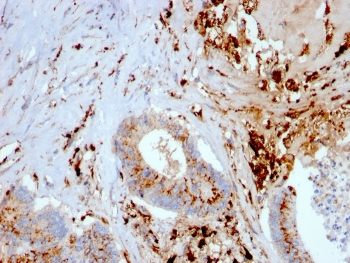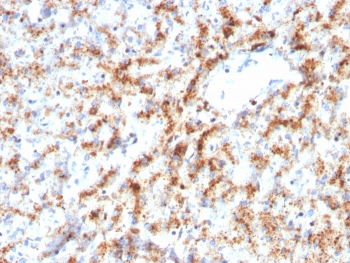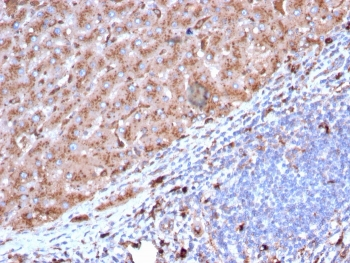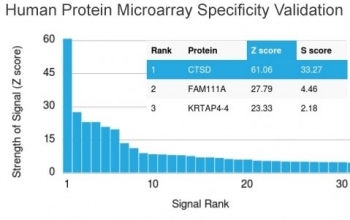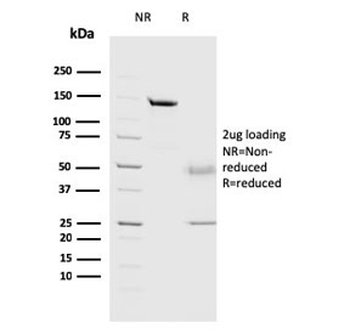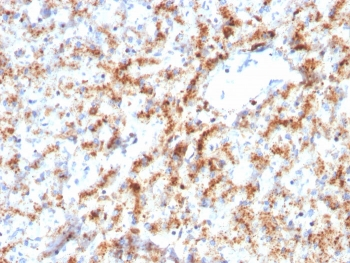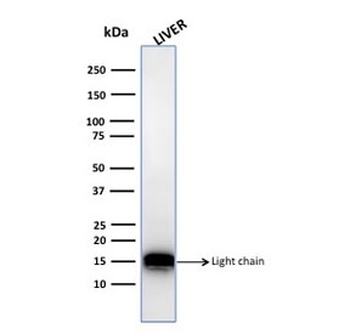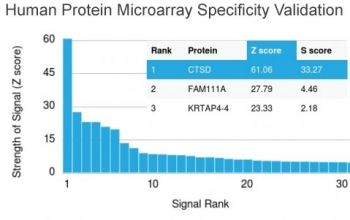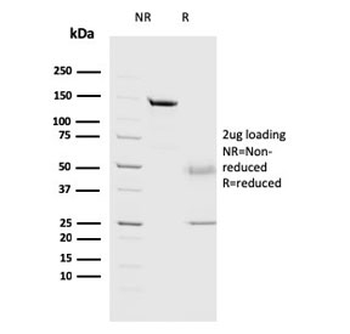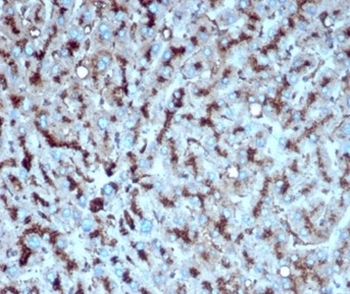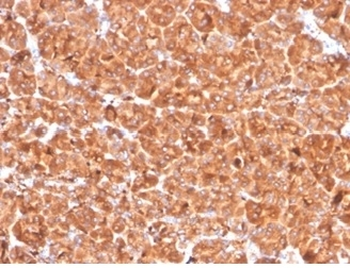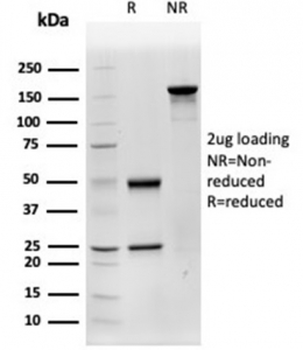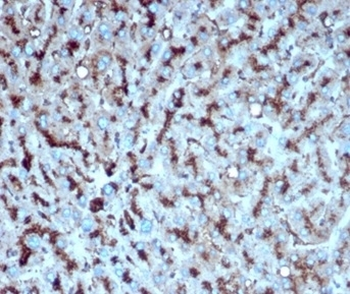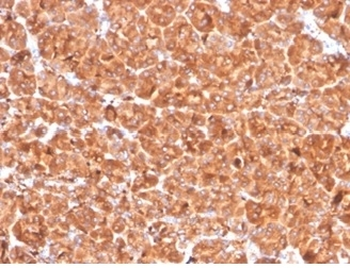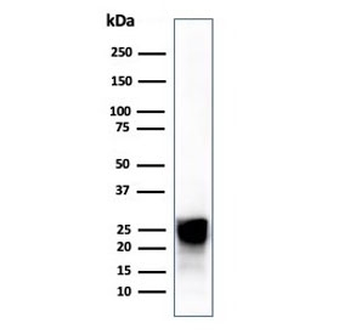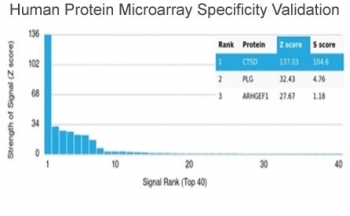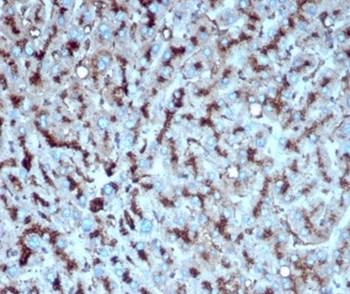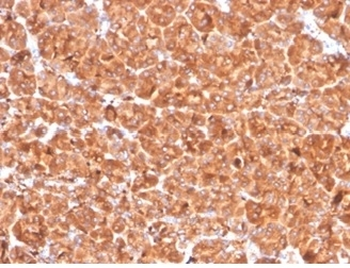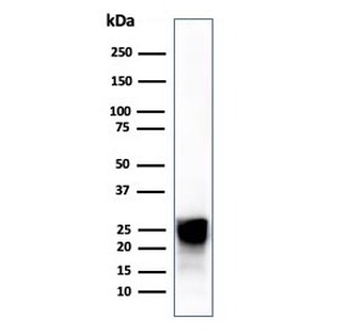You have no items in your shopping cart.
CTSD Antibody / Cathepsin D
Catalog Number: orb639608
| Catalog Number | orb639608 |
|---|---|
| Category | Antibodies |
| Description | Cathepsin D is a ubiquitously expressed lysosomal aspartyl protease involved in the normal degradation of proteins. It is synthesized as an inactive 52kDa preprocathepsin D that is cleaved and glycosylated to form a 48kDa procathepsin D and then further cleaved to produce 34kDa and 14kDa subunits (heavy and light chains, respectively). Cathepsin D exhibits pepsin-like activity and plays a role in protein turnover and in the proteolytic activation of hormones and growth factors. Mutations in this gene play a causal role in neuronal ceroid lipofuscinosis-10 and may be involved in the pathogenesis of several other diseases, including breast cancer and possibly Alzheimer's disease. |
| Species/Host | Mouse |
| Clonality | Monoclonal |
| Clone Number | CTSD/3083 |
| Tested applications | IHC-P, WB |
| Reactivity | Human |
| Isotype | Mouse IgG2b, kappa |
| Immunogen | A recombinant human partial protein (amino acids 104-250) was used as the immunogen of the Cathepsin D antibody. |
| Antibody Type | Primary Antibody |
| Dilution range | Immunohistochemistry (FFPE): 1-2ug/ml,Western blot: 1-2ug/ml |
| Purity | Protein G affinity chromatography |
| Conjugation | Unconjugated |
| Formula | 0.2 mg/ml with 0.1 mg/ml BSA (US sourced), 0.05% sodium azide |
| Hazard Information | This Cathepsin D antibody is available for research use only. |
| UniProt ID | P07339 |
| Storage | Store the Cathepsin D antibody at 2-8°C (with azide) or aliquot and store at -20°C or colder (without azide). |
| Buffer/Preservatives | 0.2 mg/ml with 0.1 mg/ml rAlbumin (US sourced), 0.05% sodium azide |
| Note | For research use only |
| Application notes | Optimal dilution of the antibody should be determined by the researcher. |
| Expiration Date | 12 months from date of receipt. |
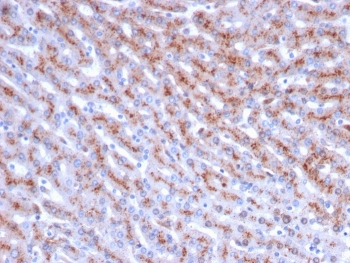
IHC staining of FFPE human liver with Cathepsin D antibody (clone CTSD/3083). HIER: boil tissue sections in pH9 10mM Tris with 1mM EDTA for 10-20 min and allow to cool before testing.

IHC staining of FFPE human liver with Cathepsin D antibody (clone CTSD/3083). HIER: boil tissue sections in pH9 10mM Tris with 1mM EDTA for 10-20 min and allow to cool before testing.
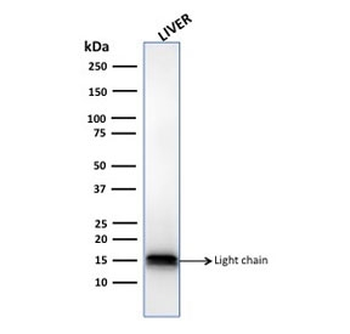
Western blot testing of human liver lysate with Cathepsin D antibody.
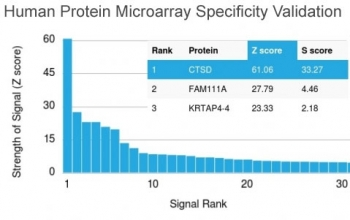
Analysis of HuProt (TM) microarray containing more than 19000 full-length human proteins using Cathepsin D antibody (clone CTSD/3083). These results demonstrate the foremost specificity of the CTSD/3083 mAb. Z- and S- score: The Z-score represents the strength of a signal that an antibody (in combination with a fluorescently-tagged anti-IgG secondary Ab) produces when binding to a particular protein on the HuProt (TM) array. Z-scores are described in units of standard deviations (SD's) above the mean value of all signals generated on that array. If the targets on the HuProt (TM) are arranged in descending order of the Z-score, the S-score is the difference (also in units of SD's) between the Z-scores. The S-score therefore represents the relative target specificity of an Ab to its intended target.
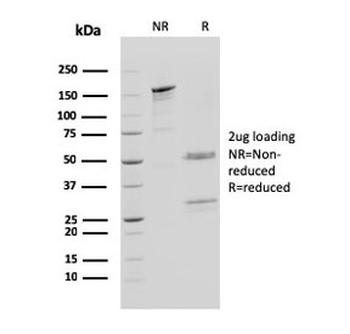
SDS-PAGE analysis of purified, BSA-free Cathepsin D antibody (clone CTSD/3083) as confirmation of integrity and purity.



